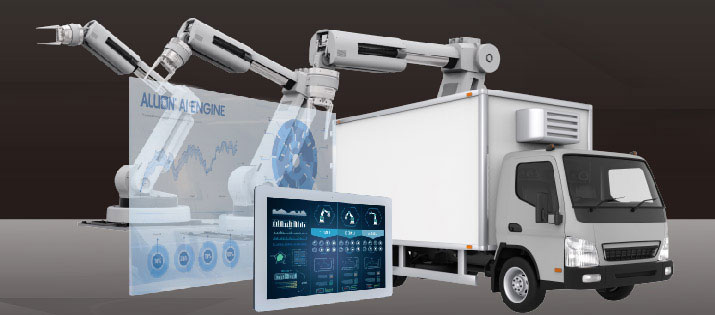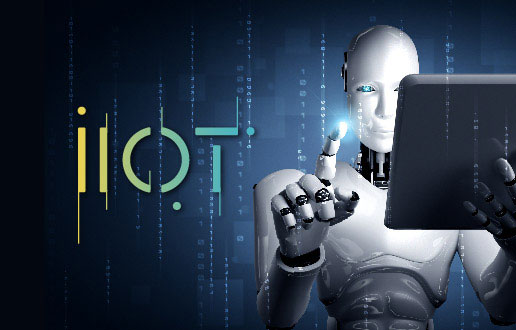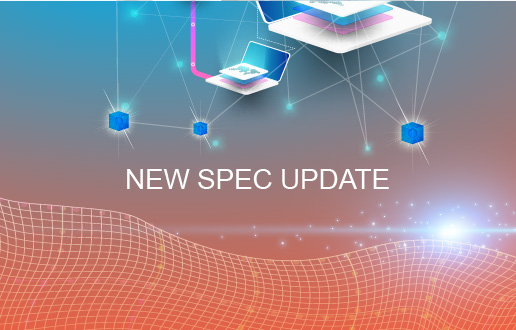You have probably heard the term the “Internet of Things”, or its abbreviation “IoT”, but what is it exactly? In recent years, high-tech experts have been declaring its imminent arrival and technology forecasters have been estimating its potential market value in the trillions of dollars. Despite all this, many people do not appreciate the importance of the IoT revolution. To bring greater clarity to this important issue, in this article, we address the following question: What direct impacts will IoT likely have on regular people and how will our lives change as a result?
In September, we introduced several “smart home” devices with IoT features—SD UHS-II Protocol Enables Advanced Applications and Performance. In this article, we explore IoT in greater breadth and depth, to give you, our valued readers, some of the latest information available. This information includes market research that can help you identify current business opportunities and future areas of growth in IoT. We also identify major growth factors, offer some predictions, and provide product vendors with some practical strategies to profit from IoT.
Internet of Things (IoT)—How Is It Changing Our Lives?
As a vision of the future, the Internet of Things (IoT) refers to a global network of inanimate objects connected to each other locally and through the Internet. Local networks consist of individual devices in relatively close proximity to one another in a home, vehicle or other similar physical environment. For instance, “smart homes” offer integrated security, lighting, and temperature controls that save energy and improve quality of life. Similarly, future home appliances and devices will also be interconnected for enhanced synergy, efficiency, and control.
In recent years, it has become increasingly common for consumer electronics to include Internet access. Physical sensors are also increasingly being added to these products to extend functionality. The combination of Internet access and sensor technology is the defining characteristics of this new class of “smart device”. These devices are often controlled via smartphone apps, which makes sense, since smartphones are the driving force behind these changes. Due to their massive sales volumes and fierce competition, smartphones have driven down the cost of electronic components. As a result, product vendors now have access to a plentiful supply of cheap components with which they can design and manufacture “smart devices” at affordable prices. Essentially, smartphones have catalyzed hardware innovation across the consumer electronics sector.
Now, smart devices are expanding beyond consumer electronics into other market sectors. This technology transfer is self-evident, even in some of the earliest IoT applications: smart cards, RFID tags, and information kiosks. The figure below shows some other examples of real-world IoT solutions.
IoT is more than a buzzword; it is an active force that is assimilating everyday physical objects into digital ecosystems that are enriching all of our lives. The Internet of Things is so ubiquitous that it tends to be overlooked; but it will soon transform much of what we do and how we do it.
Internet of Things (IoT)—Market Forecasts
Since everything can be connected to the Internet, there is seemingly no upper limit to the growth potential of the IoT market. The McKinsey Global Institute estimates that the Internet of Things will grow to somewhere between 3.9 to 11.1 trillion USD by 2025.[I] They also predict that the top two application areas will be Health Care and Manufacturing. Even if IoT market growth only manages to reach the lower limit of 3.9 trillion USD by 2025, this is still about equal to the current GDP of Germany.[II]
Gartner, a market research firm, sees the global IoT market growing to 26 billion installed units by 2020 for a total value of $1.9 trillion through sales into diverse end markets[III]. Gartner also sees the top two application areas as Manufacturing and Health Care, the same two categories as the McKinsey forecast. This forecast shows an annual growth rate of 35% for all IoT markets, which represents an amazing growth opportunity for both established and startup companies.
Internet of Things Units Installed Base by Category (Unit: Million) Source: Gartner
Gartner also emphasized that different market segments will grow faster than others. For instance, the Automotive market category is expected to grow by 67.2%, while the Generic Business category (including automation, energy, etc.) is expected to grow by 44.3%. In comparison, the Consumer category (e.g., health & fitness, home automation, energy management, entertainment) should grow by 32.4% and the Vertical Business category (e.g., agriculture, public utilities, retailing, transportation) should grow by 24.1%.
In another recent report, International Data Corporation (IDC) predicts that worldwide IoT spending will grow17.0% annually, from about $700 billion in 2015 to nearly $1.3 trillion by 2019. According to IDC, over the next five years, the fastest growing IoT categories will be insurance, medical and consumer.
Internet of Things (IoT)—Future IT Growth
IoT offers the best opportunity for IT companies to thrive in the post-PC era. Every IT company should be able to find a position in this market. Experts also predict that the following seven IT sectors will grow significantly in the coming years.
Internet of Things (IoT)—Growth Factors & Future Trends
According to BI Intelligence, there are eight major factors driving IoT growth:
Top 8 Factors Driving IoT Growth (Source: BI Intelligence)
In addition, IDC made the following predictions about future IoT trends:[IV]
1. IoT and the Cloud: Within five years, more than 90% of all IoT data will be hosted on service provider platforms, as cloud computing reduces the complexity of supporting IoT “Data Blending”.
2. IoT and security: Within two years, 90% of IT networks will have an IoT-based security breach, although most will be considered minor.
3. IoT at the edge: By 2018, 40% of IoT-created data will be stored, processed, analyzed, and acted upon close to, or at the edge, of the network.
4. IoT and network capacity: Within three years, 50% of IT networks will transit from having excess capacity to handle additional IoT devices to being network constrained with nearly 10% of sites overwhelmed.
5. IoT and non-traditional infrastructure: By 2017, 90% of data center and enterprise systems management will rapidly adopt new business models to manage non-traditional infrastructure and BYOD device categories.
6. IoT and vertical diversification: Currently, over 50% of IoT activity is centered in manufacturing, transportation, smart city, and consumer applications, but within five years all industries will have rolled out IoT initiatives.
7. IoT and the Smart City: By 2018, local governments will represent more than 25% of all government external spending to deploy, manage, and realize the potential advantages of IoT for building innovative and sustainable smart cities.
8. IoT and embedded systems: By 2018, over 60% of IT solutions originally developed as proprietary, closed-industry solutions will be open-sourced, allowing a gold rush of vertical-driven IoT markets to form.
9. IoT and wearables: Within five years, 40% of wearables will have evolved into a viable consumer mass-market alternative to smartphones.
10. IoT and millennials: By 2018, 16% of the population will be Millennials who will accelerate IoT adoption due to their unique perspective on digital connectivity.
How to Respond to Changing Market Trends
Looking at all these trends, it becomes clear that IoT is not just about making connections—it is about the applications that these connections enable. For electronic component manufacturers and distributors, the IoT revolution represents a clear win, as sensors and chips will be required for every new IoT device. For IoT system makers, the risks are greater, since there is a great deal of uncertainty as to which IoT protocols and product categories to pursue. At present, IoT companies seem more focused on product design, rather than effective business strategies.
Data management and security is another hurdle for the nascent IoT industry. Customers want their data to remain private, while companies are tempted to sell this data. Besides this fundamental conflict, firms will also be faced with some tough challenges as to how to best manage and analyze data. If they get it right, they can improve customer service, shorten time to market, and develop products that people actually want to buy. The fundamental challenge will be to transform business models by developing innovative products and revenue streams.
- Since future IoT tech will be omnipresent and omniscient, data privacy and security has become an issue of concern. In response, companies should implement secure data management policies to gain the trust of customers.
- Since most IoT products are hardware devices with long phase-out periods, the market will quickly reach saturation. As a result, hardware manufacturers might want to consider developing products that can be easily upgraded to avoid being phased out of future markets.
- Traditional hardware vendors must transform themselves in order to remain relevant in this new IoT era. To survive, these companies will need to change their corporate cultures to focus on customer services rather than products.
- Gartner predicts that 50% of IoT solutions will originate in startups that are less than three years old. This means that 50% of IoT solutions will originate within existing business structures. Cooperation and competition between these two groups can already be seen in the marketplace. Many big companies are simply buying up successful startup companies rather than developing from within.
Building the Future Together with Allion
IoT is all about leveraging technological innovation in the service of humanity and Allion is at the forefront of it all, since we see all the latest IoT products before they become public knowledge. Due to this foreknowledge, we can deliver unique insights to help your business spot new IoT trends and business opportunities. The following paragraphs introduce other IoT articles in several categories.
- Wearables
The development of wearable devices is being driven largely by new innovations in wireless technologies. Wearables started as wrist-worn devices for active people interested in tracking their fitness. Wearable devices are now usually paired with smartphones using Bluetooth Smart (aka Bluetooth Low Energy). To learn more, see this article: Smartwatch Market Trends: Hits and Misses.
- Medical
Some of the most exciting IoT applications are in the medical field. Increasingly, personal health devices are connecting friends, families, and medical practitioners. Continua, an international personal connected health standards organization, provides design guidelines that enable vendors to build interoperable networks of health and fitness devices. By cooperating with professional test labs, companies can optimize product development and reduce potential risks. To learn more, see this article: IoT Smart Home Solutions Demand Innovative Applications).
- Mobile Phone
One of the most revolutionary technological advancements of the 21st century is the smartphone. It has changed how we communicate, navigate, interact, and entertain ourselves. Smartphones run millions of software applications that allow us to control and monitor the world around us. Since most smartphone vendors cannot compete on hardware alone, they must focus on improving the user experience with innovative applications and performance enhancements. To learn more about smartphone UX testing, read either or both of these articles: Smartphone User Experience Analysis – Display or Smartphone User Experience Analysis – Camera.
- Automotive (The Connected Car)
Cars are not just things we own; they are a reflection of our lives and attitudes. Currently, connected cars are the hot topic for automotive connoisseurs. Despite their sophistication, car companies have discovered that connected cars are a different type of product. Due to their experience with other electronic devices, such as smartphones, consumers have high expectations for usability and functionality.
The connected car ecosystem is also complicated due to the diversity of companies involved and the fast-changing technology. Allion has hundreds of test engineers, world-class test facilities in various locations, and a large inventory of test devices to assist with IVI system interoperability testing, debugging, issue tracking, and analysis. To learn more about our services, please see: IAA 2015: Connected Cars are the Most Important Trend in Mobility.
Allion is on your side. We are committed to providing customized consulting and testing services related to IT product quality, performance, certification, compatibility, and interoperability. For some time now, we have been investigating how the Internet of Things is likely to evolve. As a result, we provide comprehensive testing solutions for IoT products. In the IoT industry, timing is everything, so we offer accelerated test schedules with the highest throughput in the industry. If you have a head start on the competition, you might also benefit from additional product validation testing to optimize product performance prior to release. As an accredited testing lab for over thirty (30+) industry standard organization, Allion provides comprehensive logo certification and product validation services.
For further information, please contact us at service@allion.com.
References
[I] Mckinsey.com (2016). Unlocking the potential of the Internet of Things. [http://www.mckinsey.com/insights/business_technology/the_internet_of_things_the_value_of_digitizing_the_physical_world]
[II] Economywatch.com (2016). Germany GDP (Current Prices, US Dollars) data. [http://www.economywatch.com/economic-statistics/Germany/GDP_Current_Prices_US_Dollars/]
[III] Gartner.com (2016). Gartner Says the Internet of Things Installed Base Will Grow to 26 Billion Units By 2020. [https://www.gartner.com/newsroom/id/2636073]
[IV] www.idc.com (2014). IDC Reveals Worldwide Internet of Things Predictions for 2015. [https://www.idc.com/getdoc.jsp?containerId=prUS25291514]




































